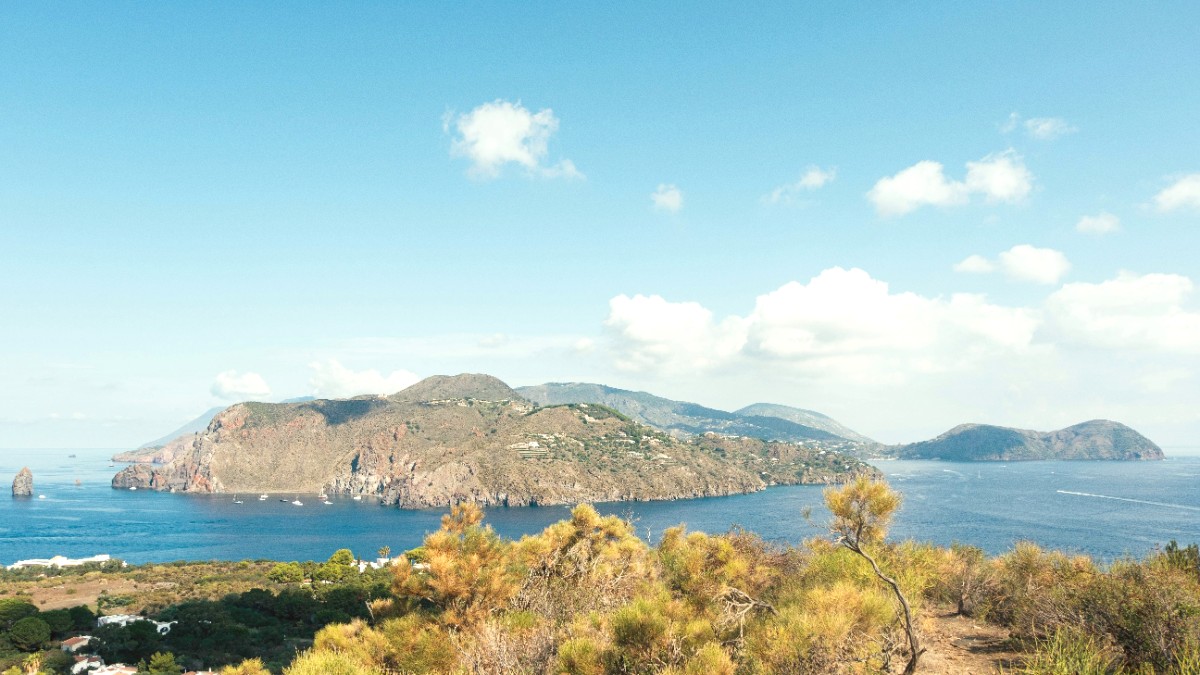
Italy
Historically, the Aeolian Islands were not wealthy, leading to a resourceful and simple yet flavorful approach to cooking. The cuisine took shape using what was readily available: fresh catches from the surrounding Tyrrhenian Sea and crops grown in the fertile volcanic soil.
This reliance on local ingredients shaped a culinary identity focused on freshness and quality. The influence of various historical rulers—Greek, Roman, Arab, Norman, and Spanish—also contributed to Sicilian cuisine broadly, with echoes found in the islands' dishes. The `cucina povera` (peasant cuisine) ethos means that natural flavors shine.
Renowned for its capers and Malvasia wine. Dishes here frequently highlight these two ingredients.
Known for its `Pizzolo`, an unique folded pizza-like bread filled with various local ingredients.
As the largest island, Lipari holds the most diverse dining scene, with options from simple trattorias to more upscale restaurants. It often showcases all Aeolian specialties.
Pasta (often bucatini) with fresh sardines, wild fennel, pine nuts, raisins, and saffron. Offers an unique sweet and savory flavor.
Found in traditional trattorias.
Swordfish cooked with capers, black olives, cherry tomatoes, and fresh mint. A light yet flavorful dish.
Most seafood restaurants feature this.
A large, folded pizza bread, unique to Stromboli. Typically filled with ingredients like ham, cheese, vegetables, or seafood.
A hearty and flavorful meal.
Mainly on Panarea and Lipari. These places interpret local cuisine with sophistication, often with stunning sea views and high-quality service.
`Trattorias` and `Ristoranti` are common, balancing quality, atmosphere, and price. Look for fresh seafood on display, indicating the day's catch.
Italian cuisine has many vegetarian dishes: pasta with vegetables (`pasta alla Norma`), salads, and `pizza marinara`. Vegan options call for specific requests, as cheese and eggs appear often.
Awareness of gluten-free (`senza glutine`) and other allergies is growing in Italy. Larger restaurants or those in main towns like Lipari might offer gluten-free pasta or pizza.
If you have severe allergies or strict dietary needs, consider booking accommodation with kitchen facilities. This way, you can prepare your own meals.
Several operators, mainly on Lipari and Salina, offer cooking classes. These generally focus on traditional Aeolian and Sicilian dishes, teaching you how to prepare fresh pasta, seafood, or local vegetable recipes.
Food tours might include visits to local markets and tastings.
On Salina, visit caper farms to learn about cultivation. Malvasia vineyards welcome visitors for tours and tastings of their renowned sweet wine.
These visits provide a direct connection to the source of the islands' ingredients.
On Stromboli, some restaurants offer terraces with direct views of eruptions.
Many boat tours include lunch or dinner served on board.
Taste dishes prepared with ingredients grown directly on the farm.
Local `sagre` celebrate specific produce, especially in summer.
Follows a traditional structure, but you need not order every course: `Antipasto` (Appetizer), `Primo Piatto` (First course - pasta/risotto), `Secondo Piatto` (Main course - meat/fish), `Contorno` (Side dish), `Dolce` (Dessert), `Caffè` (Espresso), `Amaro`/`Digestivo` (liqueur).
Not all courses are mandatory.
For economical meals, seek pizzerias (`pizza al taglio`), `paninoteche` (sandwich shops), and bars. Bars are great for breakfast, offering coffee and sweet pastries. Small local bakeries sell savory `cunzatil`.
Markets are excellent for fresh produce.
`Cannoli`: Crispy fried pastry shells with sweet, creamy ricotta cheese, often garnished with candied fruit or chocolate chips. A classic Sicilian dessert.
Fresh seafood is highly seasonal, so ask what is freshest on the day. Summer brings an abundance of fresh fruits like figs and prickly pears (`fichi d'india`).
Crispy fried pastry shells filled with sweet, creamy ricotta cheese, often garnished with candied fruit or chocolate chips. A classic Sicilian dessert.
A rich, ornate sponge cake layered with sweetened ricotta cheese, candied fruit, and often covered in marzipan.
While traditionally a Christmas sweet, these crunchy sesame seed biscuits are often available year-round in local bakeries.
For economical meals, seek out pizzerias (for whole pizzas or slices `pizza al taglio`), `paninoteche` (sandwich shops), and bars.
Bars are excellent for breakfast, offering coffee and sweet pastries (`cornetti`).
International cuisine is very limited on the Aeolian Islands. The focus remains strongly on Italian and, more specifically, Aeolian/Sicilian cuisine.
Embrace the local flavors.
Lipari has a daily fish market near the port, where you can buy the morning's freshest catch.
Local markets are an excellent source for fresh produce and regional cheeses.
If your accommodation has a kitchen, cooking your own meals from market ingredients is a great strategy.
When dining out, remember these customs to make your experience smooth and enjoyable: